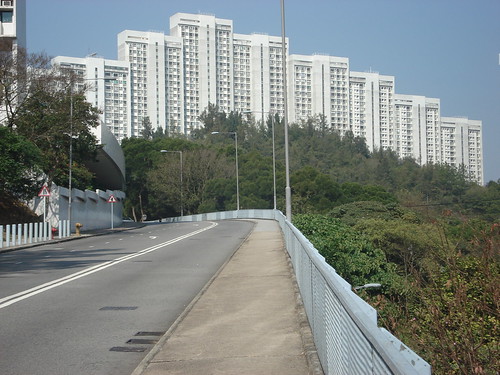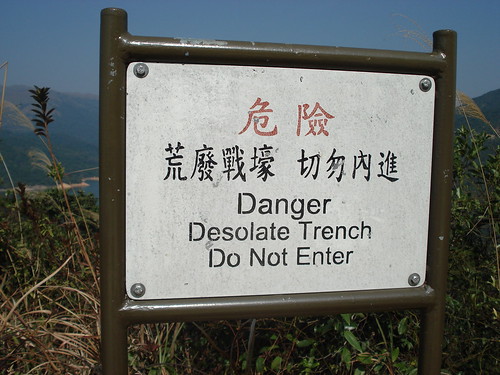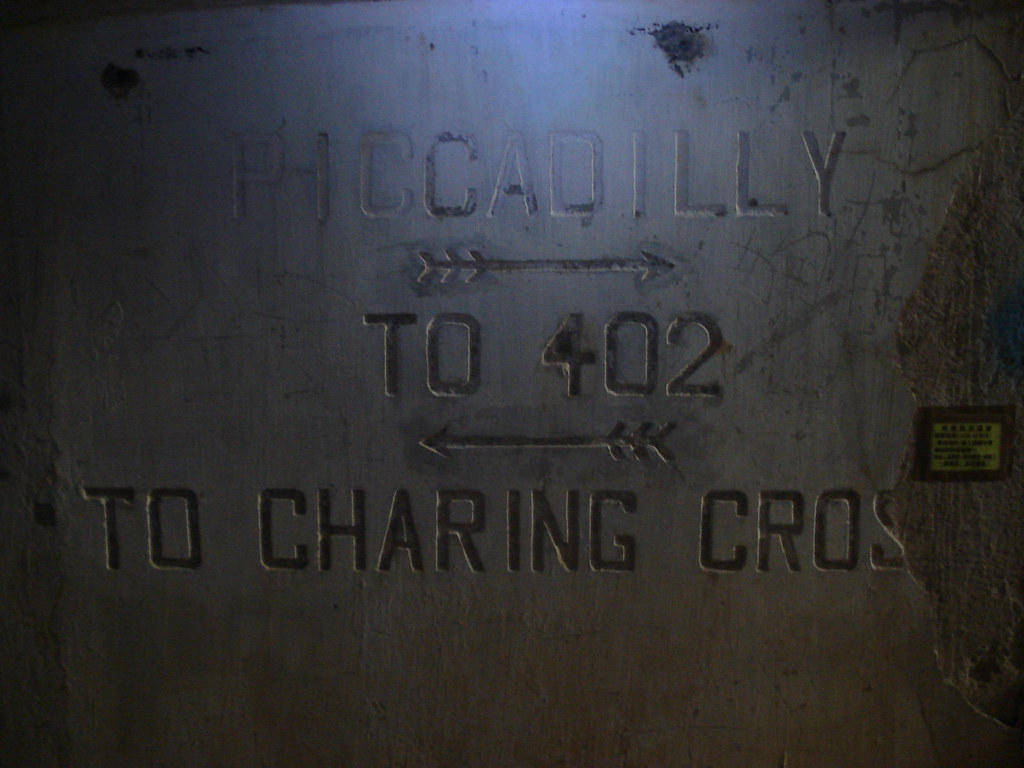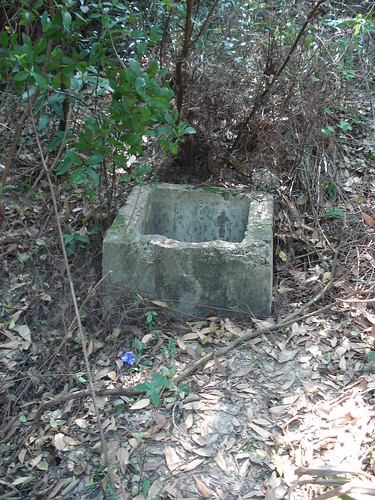As the Japanese moved in to the New Territories to the North of Hong Kong in 1942-43, the British (along with Scottish and Indian Rajput troops) manned a ridgeline that stretched from the Peal River Delta in the West all the way over to Lei Yue Mun in Southern Kowloon. It is on this ridgeline that most of the ruins and redoubts are found.
In the end, the British troops did not put up much of a fight, giving up the line in a matter of days. There were reports of some fighting and casualties though, as the troops hastily retreated to the temporary safety of Hong Kong Island.
One of the most complex series of caves, foxholes and pillboxes is located on a hill called Smuggler’s Ridge overlooking Hong Kong’s highest mountain, Tai Mo Shan. Just below the highest point of this hill, a few steps off the Wilson Trail, one can find the well maintained ruins of the Shing Mun Redoubt, or The Gin Drinker’s Line.
I had done some cursory research via the web on what this system of tunnels looks like, what kind of access your average weekend explorer could get and it looked remarkably easy to get into. The only challenge is getting there, as it is not located very near a train or bus line. So on what would be one of my last free Saturdays that I would spend in Hong Kong, I set out early in the a.m. after a jet lag induced early awakening.
Since I had about seven hours of daylight at my disposal and ample energy, I decided to take the train to the nearest station and hoof it from there. I walked from Mei Foo Station and headed up into the hills. After an hour of walking, I was delighted to find myself at the base of an amazing set of high rise apartments built on the peak of a hill and that were featured in one scene of the iconic movie Koyanisqaatsi, which I had also been meaning to get up here and check out:

Continuing on, I wandered through a few squatter’s villages. It’s pretty crazy to see how people can erect illegal housing in the hills a couple hundred meters from super expensive luxury housing. Posted all over the place are signs that say something like “Warning: Land in this area is subject to landslip during heavy rain and typhoons. Some structures have been designated for clearance…” And yet year after year, these squatters continue to build up their rent free abodes.
Coming over another hill, I found myself at a peak with a reservoir several kilometers to my right and another several kilometers to my left. I knew that the Shing Mun Redoubt was located in the hills above a reservoir, so I had to pick the right one. Thanks to some friendly locals feasting on bowls of noodles in a hilltop ranger station, they pointed me to the correct reservoir. After some more hiking, I was on the McClehose Trail, the 100km hiking trail in the New Territories of HK. Every year, teams of four people set out on the trail and don’t stop walking/running until they finish 18 to 30 hours later. A relay? Nope, the team of four must stay together and finish together. Hardcore!
Soon I reached the Wilson Trail and before long, I reached the entrance of what I had been looking for, unceremoniously marked by this sign:

I explored the tunnels for the next half hour and was delighted to be completely alone, the lone person in a city of 8 million interested in checking out living history on a perfect Saturday in January:

These tunnels were built in the years leading up to the start of World War 2 and were meant to be the last line of defense for any invasions launched by the Japanese from mainland China. The Shing Mun Redoubt consists of intertwining and connecting tunnels. Each one has a unique name, most of which correspond to famous streets in London. You will find on the walls colorful names such as Piccadilly, Oxford, Shaftesbury, Haymarket, Charring Cross, all of which are the original engravings:

The tunnels are surprisingly clean and well kept, as I was expecting garbage and a strong urine smell at least. Some tunnels are dead ends as decades of mud deposits have blocked access. Using the torch I had brought along for this purpose, I ducked through every branch of the complex I could get to, then went above ground. One of the reasons this fortress fell so easily to the Japanese were the shafts that led straight down to the tunnels that were seemingly made for tossing in a grenade:

Finally, I headed back down the Wilson Trail and was soon upon the dangerously low Shing Mun Reservior:

Instead of turning back from whence I came, I got back on the McClehose trail, then scaled the 500m+ Needle Hill, then back down the hill to Sha Tin and a train ride home. In all, this was about a five hour hike and I estimated that I covered about 20km. Due to severe chafing on account of the hike, I was doubtful for the third installment of the King of the Hills Mountain Marathon series the next day. But I managed to get ahold of some much needed Vaseline and finished the tough 14km course on Lantau Island in a blazing 2:06. Well, at least the temperature was blazing if my time wasn’t.


2 comments:
Wait a minute, what was the Vasoline for?
MF--
How is everything? Going to chicago this weekend--hope your time w/ Ina is fun! Talk to you soon. Thanks for the hash shirt, I'm still waiting for an occasion to wear it.
Katie
Post a Comment